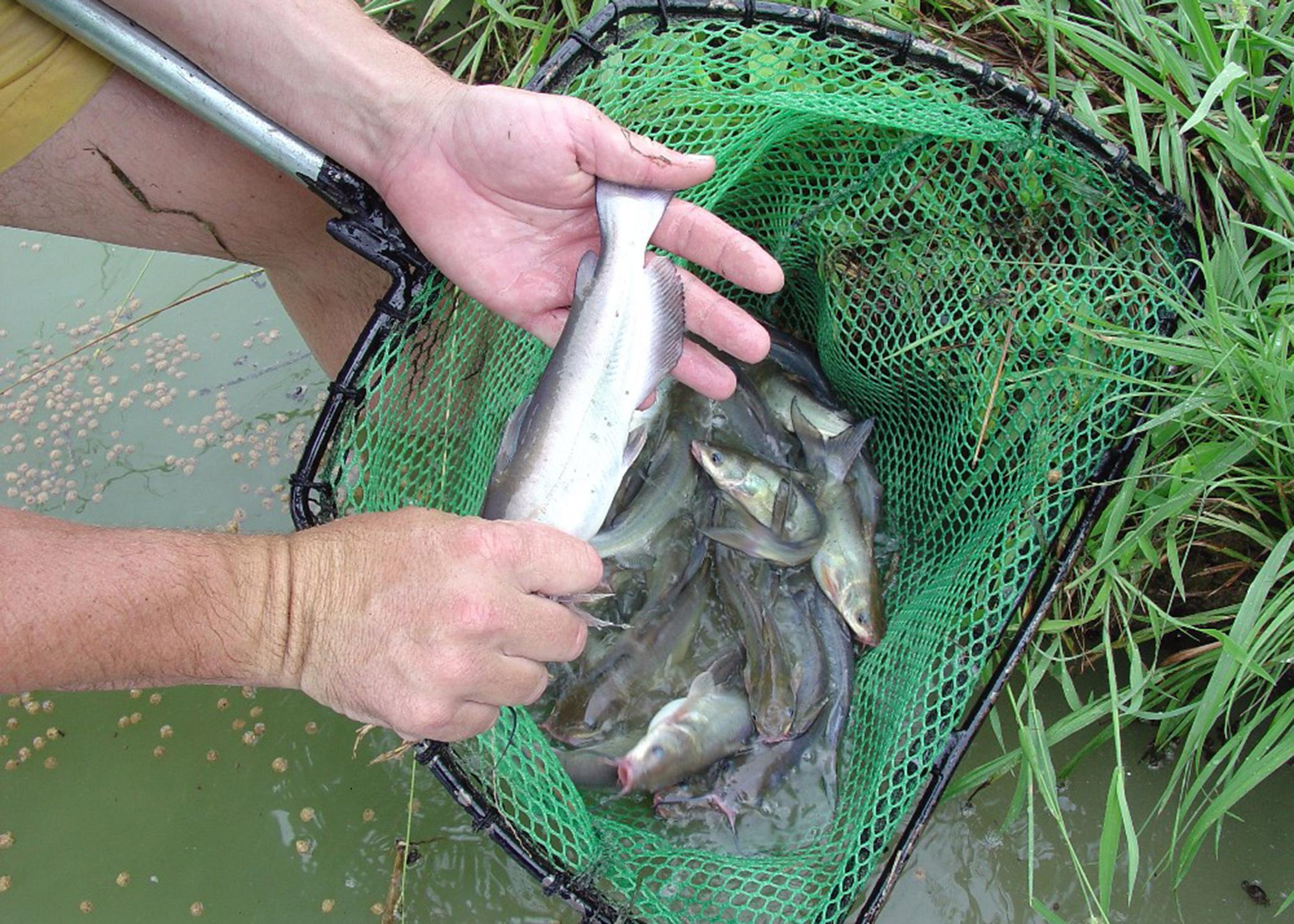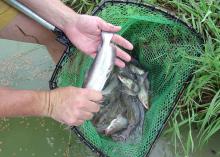Information Possibly Outdated
The information presented on this page was originally released on April 11, 2014. It may not be outdated, but please search our site for more current information. If you plan to quote or reference this information in a publication, please check with the Extension specialist or author before proceeding.
Catfish producers keep close eye on trematodes
MISSISSIPPI STATE -- Eliminating ramshorn snails is a proven method of controlling a major catfish parasite, but producers must be constantly vigilant to keep a small problem from exploding into big trouble.
Digenetic trematodes, which are spread by ramshorn snails, can cause costly problems in Mississippi catfish ponds, including slow fish growth, susceptibility to diseases and fingerling death. This parasite is showing signs of reemerging as a significant problem, and it has spread from the Delta to east Mississippi ponds.
“People think they have trematodes under control, so they let their guard down and don’t treat again until they have problems with their ponds,” said Lester Khoo, veterinarian and director of the aquatic diagnostic lab at the National Warmwater Aquaculture Center at the Delta Research and Extension Center in Stoneville.
“We had eight cases of trematodes in our lab in 2012 but 80 cases in 2013,” Khoo said. “If farmers don’t take care of the situation, we could have more cases this year. If they are not as vigilant as they should be, trematodes can become a problem in ponds rather quickly.”
The parasite can cost catfish producers hundreds of dollars per acre in a system that has profit margins of only a few dollars per acre, said Jimmy Avery, an aquaculture professor with the Mississippi State University Extension Service.
“Although trematodes typically don’t kill the catfish, they can dramatically impact their growth,” Avery said. “The catfish has an adverse reaction to the parasite and doesn’t feed well while its body is reacting to the parasite.
“When you have an active infection in a pond, feeding almost grinds to a halt,” he said. “It doesn’t take a very large decrease in feeding to have a very large impact in profitability on a farm. You’re taking up time in the pond when the catfish are not putting on any additional weight.”
Scientists documented the appearance of trematodes in Mississippi in 2000, Avery said. In the past, trematodes were a problem in the Delta, but the parasite spread to eastern Mississippi ponds in 2010. Researchers have already devised methods to control trematode infestations, but the best defense is to prevent the problem from developing, he said.
The trematode has a complicated life cycle. In addition to using snails and catfish as hosts, it also infects American white pelicans, which then carry trematodes to other ponds. Trematode infestations vary based on the abundance of these pelicans and how well producers manage ramshorn snails in their ponds.
“East Mississippi catfish producers didn’t have the problem prior to 2010 because there were very few pelicans in the area,” Avery said. “Pelicans started showing up in east Mississippi in late 2010, and we started seeing problems with trematodes the summer of 2011.”
Mark Peterman, who began in March as the Extension Service aquaculture associate for catfish producers in east Mississippi, is spreading the word about potential trematode problems in this part of the state.
“This is a relatively new problem for east Mississippi growers, and it has the potential to expand to other catfish ponds in the area,” Peterman said. “If you have the snail and there have been pelicans on your property, then your ponds could potentially have this pathogen. We are promoting awareness of this issue, but the decision to treat or not is left up to the farmer.”
Problems begin in early summer when ramshorn snails begin to shed the life stage of the trematode that infects catfish. By mid- to late June, the number of parasites in an infested pond is high. Infected fish begin to show reduced appetite and take longer to grow to market size. Trematodes are usually found just under the skin of infected catfish.
“As these fish become infected, they’ll stop feeding right when they should be growing the most,” Avery said. “Farmers notice them not eating and begin to investigate.”
Mississippi catfish producers know about the problem, how to identify it and what it costs them, he said. When they are not dealing with an active infestation, other concerns sometimes become a priority.




